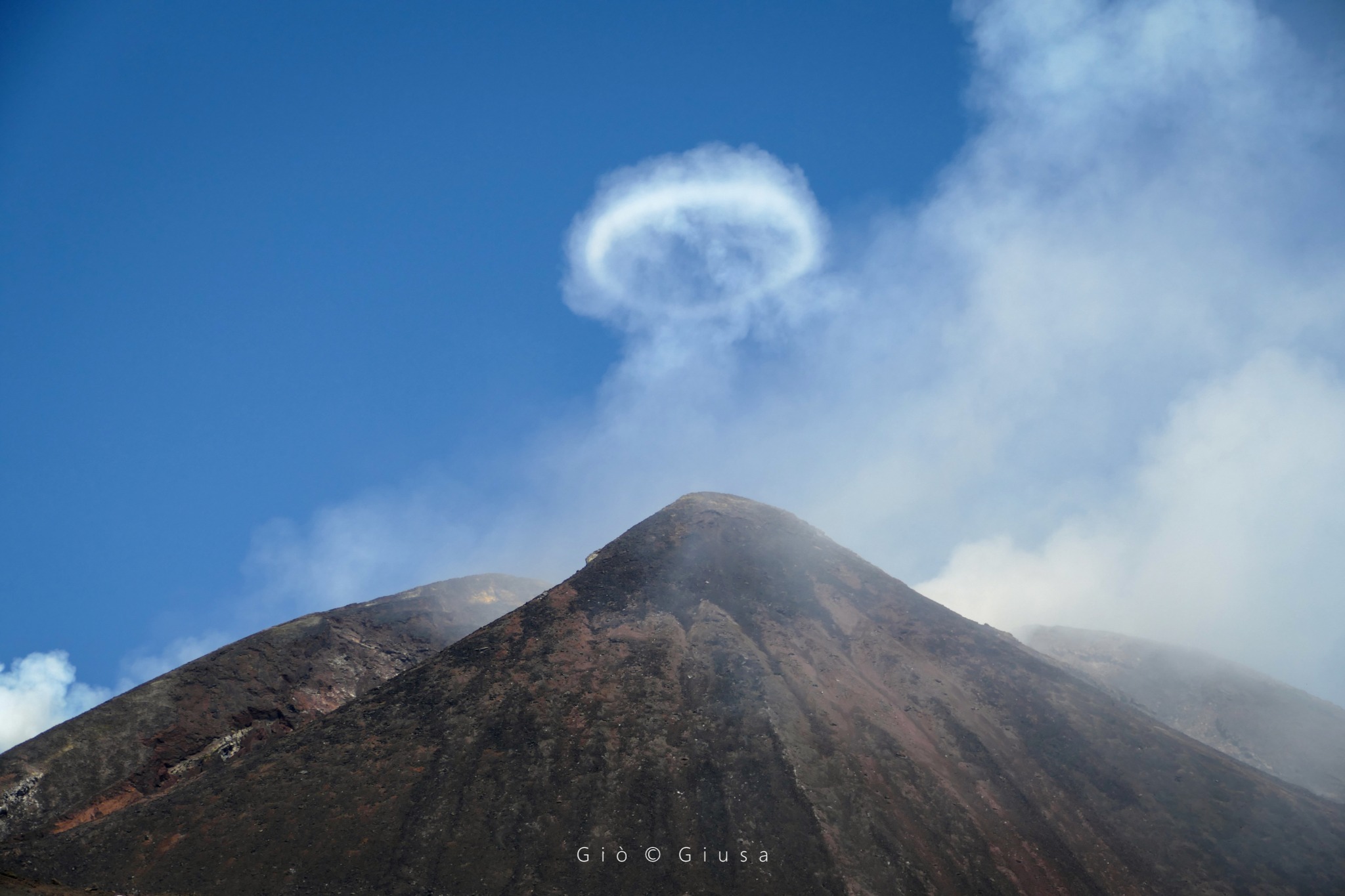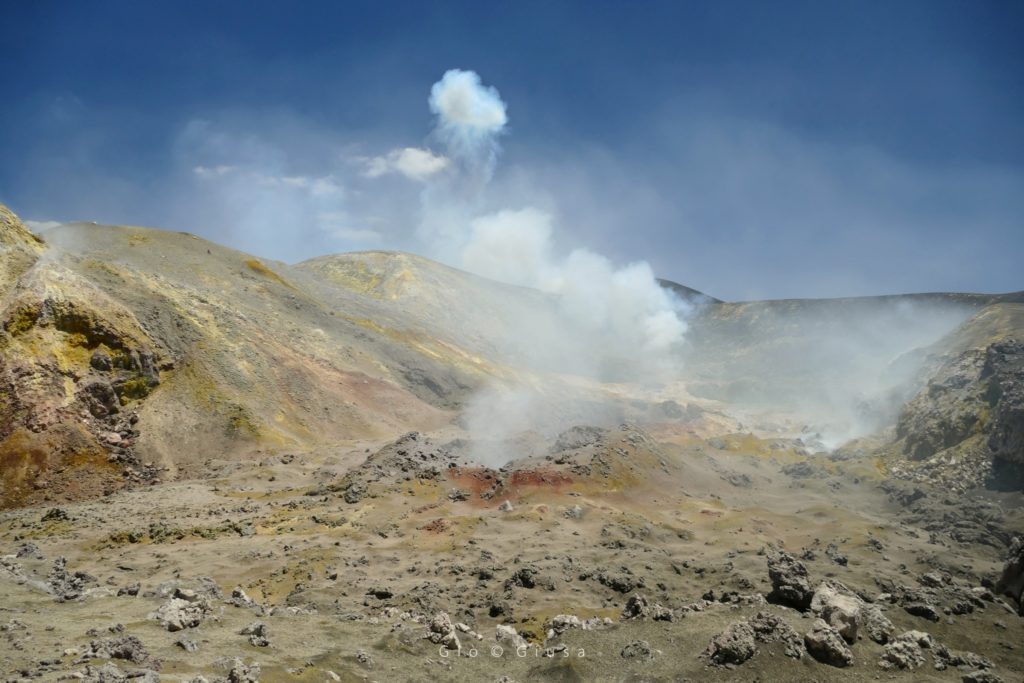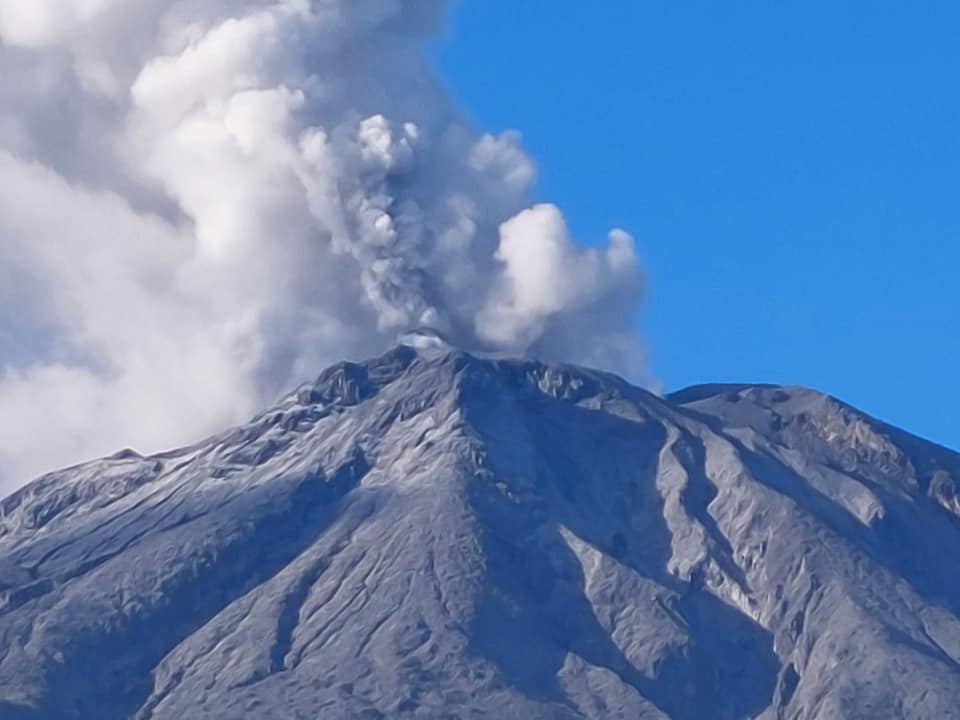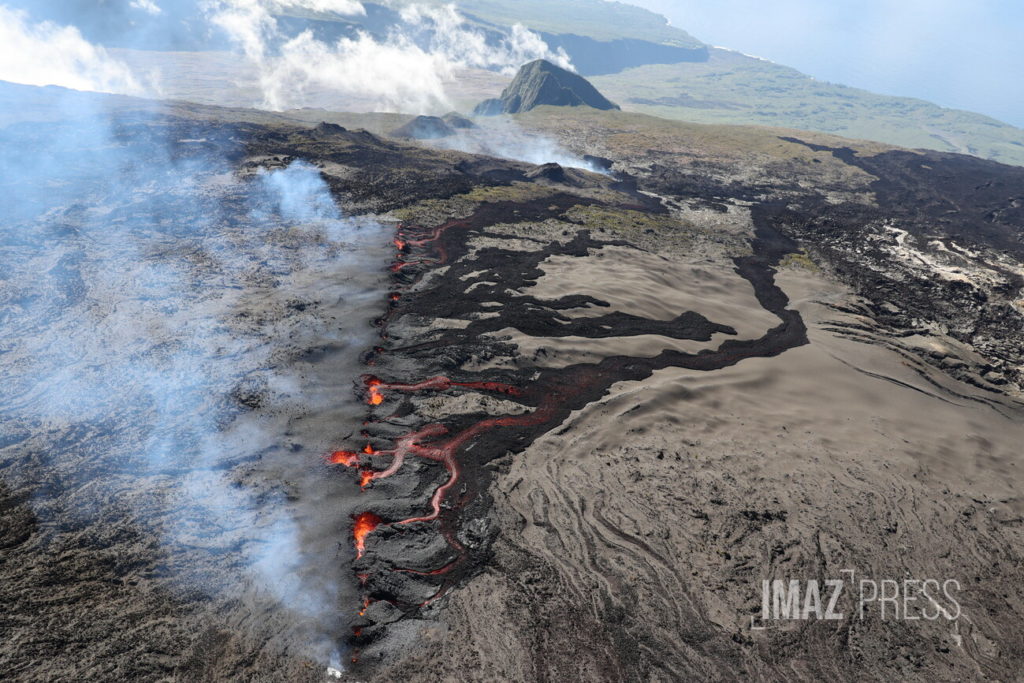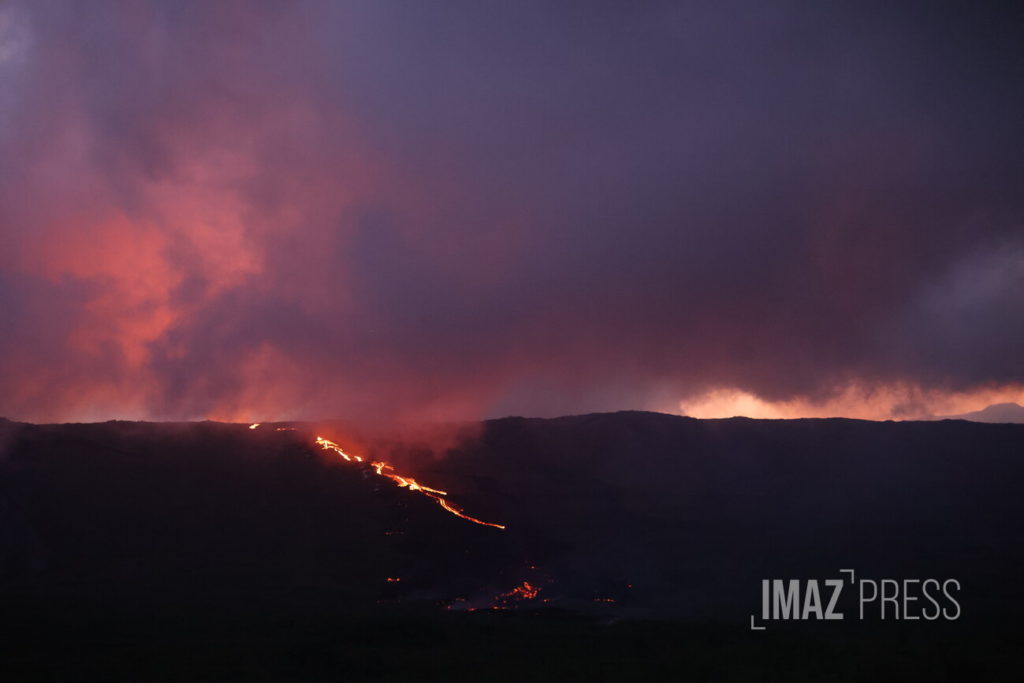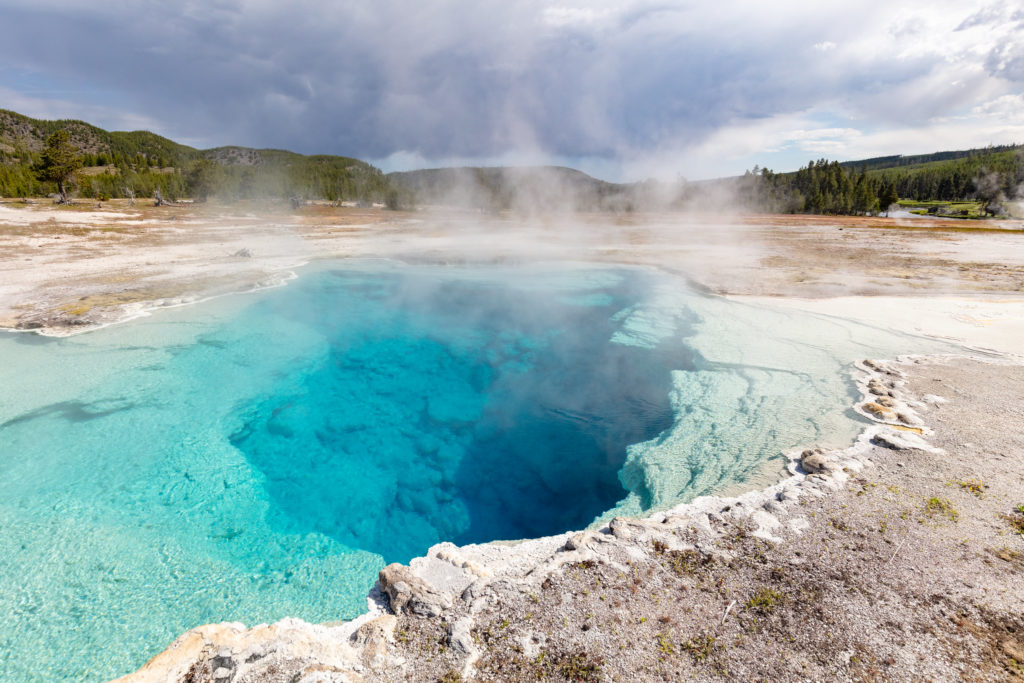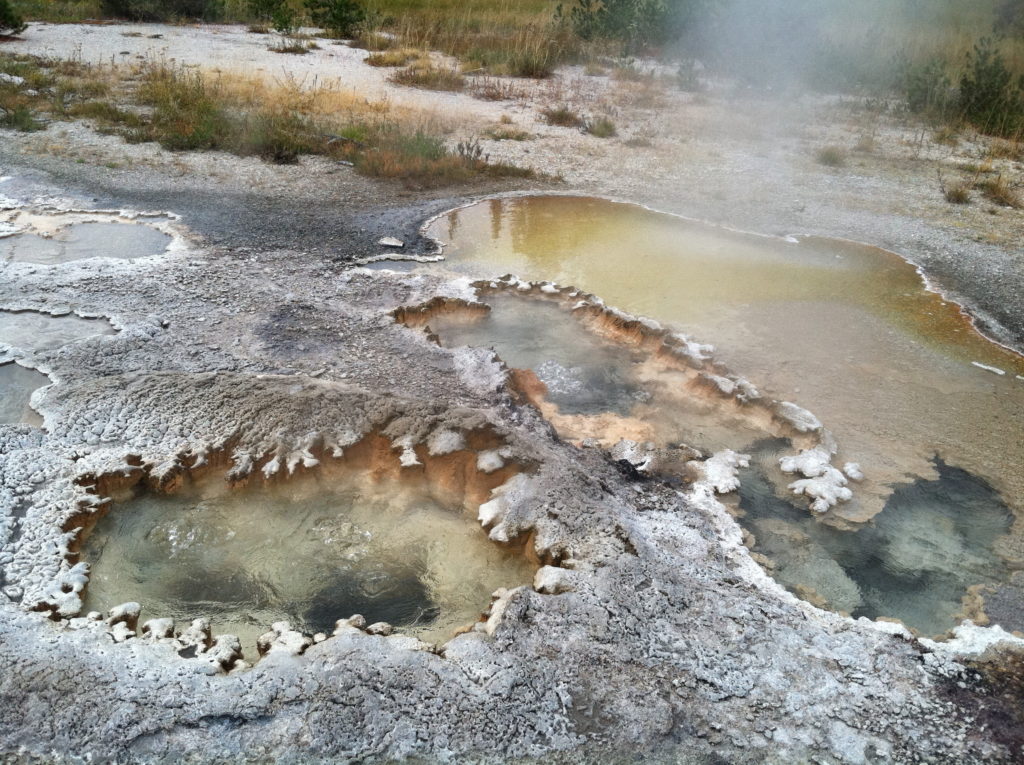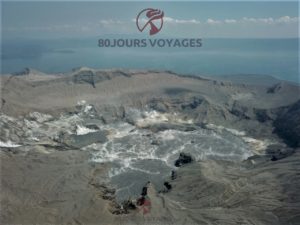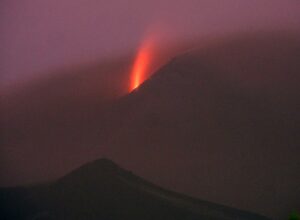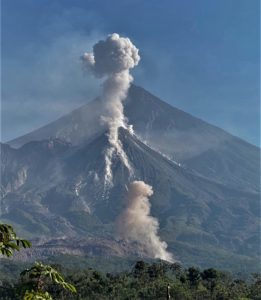August 02 , 2023.
Italy / Sicily , Etna :
WEEKLY BULLETIN, from July 24, 2023 to July 30, 2023. (issue date 01 August 2023)
ACTIVITY STATUS SUMMARY
In the light of the monitoring data, it is highlighted:
1) VOLCANOLOGICAL OBSERVATIONS: Degassing activity at the level of the summit craters, in particular at the Bocca Nuova crater and at the Southeast crater.
2) SEISMOLOGY: 2 earthquakes of ML equal to or greater than 2.0 were recorded. The average amplitude of the volcanic tremor remained at average values. The locations of the centroids of the sources of the tremor remain in the area of the Southeast crater.
3) INFRASOUND: Weak infrasonic activity.
4) GROUND DEFORMATIONS: During the last week, the ground deformation monitoring networks have not recorded any significant variations.
5) GEOCHEMISTRY: SO2 flux at an average level
The CO2 streams show average degassing values.
There are no Helium isotope ratio updates.
The partial pressure of dissolved CO2 does not show any significant variations.
6) SATELLITE OBSERVATIONS: Thermal activity observed from the satellite was generally weak.
7) OTHER OBSERVATIONS: The digital surface model (DSM) of the Etna volcano was updated in July 2023 and the thicknesses of the volcanic deposits accumulated during the eruptive events that occurred from November 2022 were calculated.
VOLCANOLOGICAL OBSERVATIONS
The monitoring of volcanic activity during the week was carried out through the analysis of images from the network of surveillance cameras of the INGV, Osservatorio Etneo (INGV-OE) and through various inspections carried out in the area of the summit by INGV-OE staff. The week was characterized by degassing activity at the Bocca Nuova crater and the Southeast crater.
During the reporting period, the presence of degassing activity at the Southeast crater (CSE) was observed, mainly from vents located in the eastern sector of the crater area. Regarding the activity at the Bocca Nuova crater, the BN1 showed a pulsed degassing activity coupled with well audible roars during the inspection carried out on July 28, while the B2 showed a degassing activity continues. In addition, the new pit, formed near the southern part of the Bocca Nuova crater rim (see also Rep. N. 30/2023 ETNA), showed degassing activity interspersed with vigorous gas/vapor emissions that generated, intermittently, rings observed several times during the different inspections. Finally, the Voragine crater showed no degassing activity, while the Northeast crater is occluded and showed weak fumarolic degassing in limited areas of the North wall.
Source : INGV.
Photos : Gio Giusa.
Philippines , Bulusan :
BULUSAN VOLCANO ADVISORY ,1 August 2023 , 03:00 P.M.
A total of eight (8) volcano-tectonic earthquakes were detected by the Bulusan Volcano Network (BVN) from 09:08 AM to 10:46 AM today, 1 August 2023. The strongest of these were recorded at magnitudes of ML0.7- ML2.0 and occurred between 4 to 7 kilometers deep beneath the southern sector of Bulusan Volcano. Degassing at the summit crater and the active northwest vents has been otherwise weak the past days. Ground deformation data from continuous GPS monitoring have recorded inflation of the edifice since December 2022, while electronic tilt data indicate a shorter-term and ongoing inflation of the southwestern flank since February 2023. In sum, these changes in the condition of the volcano may progress into further unrest and potentially trigger steam-driven or phreatic eruptions from any of its active vents.
Alert Level 0 (Normal) is maintained over Bulusan Volcano but there are chances of steam-driven or phreatic eruptions occurring from the summit crater and lateral vents. Should current monitoring parameters persist, the status of Bulusan may be raised to Alert Level 1. Local government units and the public are reminded that entry into the 4-kilometer radius Permanent Danger Zone (PDZ) particularly near the vents on the south-southeastern slopes, should be avoided due to the possibility of sudden and hazardous steam-driven or phreatic eruption, rockfall, and landslide. Civil aviation authorities must also advise pilots to avoid flying close to the volcano’s summit as ash from any sudden phreatic eruption can be hazardous to aircraft. Furthermore, people living within valleys and along river/stream channels should be vigilant against sediment-laden stream flows and lahars in the event of heavy and prolonged rainfall.
DOST-PHIVOLCS is closely monitoring Bulusan Volcano’s condition and any new development will be relayed to all concerned.
Source : Phivolcs
Photo : Sorsogon news.
La Réunion , Piton de la Fournaise :
Monthly Bulletin – July 2023 , Piton de la Fournaise Volcanological Observatory – IPGP
Piton de la Fournaise activity
Seismicity
In July 2023, the OVPF-IPGP recorded at the level of the Piton de la Fournaise massif in total:
• 2189 superficial volcano-tectonic earthquakes (0 to 2.5 km above sea level) under the summit craters;
• 45 deep earthquakes (below sea level);
• 111 long-period type earthquakes;
• 235 landslides.
The volcano-tectonic activity under the Piton de la Fournaise in July 2023 will have been marked by the seismic crisis of July 2.
The seismic crisis began at 07:36 (local time; 03:36 UTC) and was accompanied by rapid deformations. It preceded the appearance of an eruptive tremor by 54 minutes (8:30 a.m. local time; 04:30 UTC), indicating the arrival of magma near the surface. This eruption was characterized by the opening of eruptive fissures on the eastern flank of the volcano around 8:30 a.m. and 12:30 p.m. (local time, 4:30 a.m. and 8:30 a.m. UTC), then on the southeast flank of the volcano around 5:50 p.m. (local time, 1:50 p.m.) at inside the Enclos Fouqué caldera.
The eruption is still ongoing as of this writing.
During this seismic crisis, 578 superficial volcano-tectonic earthquakes (0 to 2.5 km above sea level) were recorded under the southern and northern rim of the Dolomieu crater.
Following the start of the eruption, seismicity continued for several days, especially under the summit area; thus 1754, 232, 70, 18, 33 and 12 superficial volcano-tectonic earthquakes were recorded respectively on July 2, 3, 4, 5, 6 and 7.
Deep seismicity under the eastern flank (33 events) was also recorded on July 2 following the start of the eruption. Since July 7, seismicity has remained low.
This seismic crisis – and the eruption that followed – were preceded by an increase in seismicity from June 12, 2023. Thus between June 12 and the start of the seismic crisis of July 2, 2023, 789 superficial volcano-tectonic earthquakes below the summit. These earthquakes were located under the Dolomieu crater between -500 and 1200 m above the level
of the sea .
Numerous landslides in the Cratère Dolomieu, at the Cassé de la Rivière de l’Est and at the level of the flow of the eruption of September-October 2022 were also recorded in July 2023.
Deformation
Summit inflation – linked to pressurization of the superficial magma reservoir located 1.5-2 km deep under the craters – which had resumed in mid-June 2023 continued until the injection of magma towards the surface, which led to the eruption of July 2, 2023. This injection of magma towards the surface was accompanied by rapid deformations (of a few decimeters), reaching up to 75 cm of uplift on the eastern flank of the terminal cone.
Following the start of the eruption, a slight deflation of the edifice – linked to the transfer of magma from the magmatic storage zone located under the summit to the eruptive site – was recorded until mid-July. Since mid-July, a weak inflation of the summit zone has been recorded, indicating a re-pressurization of the volcano’s feeding system, with possible transfer of deep magma to the latter.
The eruption started on July 02, 2023, around 08:30 local time continues. The amplitude of the volcanic tremor (indicator of an emission of lava and gas on the surface) remains very low compared to the start of the eruption and is still slowly decreasing.
The flow front has not changed since July 5 and is now frozen. It is located 1.8 km from the road.
Source : OVPF
Photos : sly/rb/www.imazpress.com
United – States , Yellowstone :
Tuesday, August 1, 2023, 6:15 AM MDT (Tuesday, August 1, 2023, 12:15 UTC)
44°25’48 » N 110°40’12 » W,
Summit Elevation 9203 ft (2805 m)
Current Volcano Alert Level: NORMAL
Current Aviation Color Code: GREEN
Recent Work and News
Steamboat Geyser did not experience an eruption in July, and the total number of eruptions for the year remains at five.
The thermal features near Doublet Pool on Geyser Hill, not far from Old Faithful, that formed and became more active in late May and early June were dormant by the end of July. A small section of boardwalk between Sponge Geyser and Doublet Pool remained closed during July due to the proximity of thermal features that had been spattering hot water and some debris onto the pathway, but that closure will be lifted soon.
Sapphire Pool, in Biscuit Basin, steams on a stormy morning. A few “biscuits” remain along the pool’s southern edge (center right of photo) – violent geyser eruptions destroyed hundreds of the features when the pool’s plumbing system changed after being jarred by the 1959 Hebgen Lake earthquake.
Summer field work by Yellowstone Volcano Observatory scientists during July included maintenance on geophysical and geochemical sensors, water sampling, and geological studies of hydrothermal explosion craters and glacial deposits. Additional maintenance of geophysical monitoring stations is planned in August.
Seismicity
During July 2023, the University of Utah Seismograph Stations, responsible for the operation and analysis of the Yellowstone Seismic Network, located 88 earthquakes in the Yellowstone National Park region. The largest event of the month was a minor earthquake of magnitude 2.2 located about 14 miles north-northwest of Lake, Yellowstone National Park, on July 25 at 8:52 PM MDT.
July seismicity in Yellowstone was marked by a swarm of 12 earthquakes, located approximately 10 miles northeast of West Yellowstone, MT, during July 10–13. The largest earthquake in the sequence, a magnitude 1.5, occurred July 10 at 11:09 PM MDT.
Yellowstone earthquake activity is currently at background levels.
Silica sinter (an amorphous form of silicon dioxide) forms from the waters that flow from hot springs near Shoshone Lake, Yellowstone National Park.
Ground Deformation
During the month of July, continuous GPS stations in Yellowstone Caldera recorded a pause in long-term ground subsidence, which has been ongoing since 2015 at rates of a few centimeters (about 1–2 inches) per year. A small amount of seasonal uplift of about 1 cm (0.4 inch) has been recorded as water from snowmelt and runoff percolates into the subsurface, causing the ground to swell like a wet sponge—a style of deformation that occurs each summer. A GPS station near Norris Geyser Basin did not record any deformation during the past month after seeing steady subsidence totaling about 3 cm (slightly more than 1 inch) between October 2022 and June 2023.
Source : YVO.
Photos : National Park Service / Jacob W. Frank, July 20, 2020. USGS / Jake Lowenstern.
Colombie , Purace – Los Coconucos volcanic chain :
Puracé Volcano Weekly Activity Bulletin – Los Coconucos Volcanic Range
From the monitoring of the activity of the PURACÉ VOLCANO – VOLCANIC CHAIN LOS COCONUCOS, the MINISTRY OF MINES AND ENERGY, through the COLOMBIAN GEOLOGICAL SERVICE (SGC), reports that:
During the week of July 25 to 31, 2023, seismic activity showed an upsurge in the occurrence of events related to the fracturing of rocks on Wednesday 26, which were located under the Piocollo volcano, located southeast of the Purace volcano. However, these were of low energy intake. The predominance of seismic events related to the movement of fluids in the volcanic conduits, which were located mainly under the crater of the Puracé volcano, continued.
This activity was accompanied by localized deformation in the upper part of the volcanic chain. Likewise, stable values continued to be observed in sulfur dioxide (SO2) fluxes. On the other hand, the concentration of carbon dioxide (CO2) continued to show high values compared to what had been recorded in the second half of 2022.
The other parameters measured and used for the diagnosis of volcanic activity did not show significant changes during the period evaluated.
The activity level of the volcano remains at: YELLOW LEVEL (III): CHANGES IN THE BEHAVIOR OF VOLCANIC ACTIVITY
Source et photo : SGC

